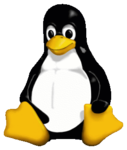Kernel: Linux 5.7, EFI and NUMA

-
Linux 5.7 DRM Bringing New "TIDSS" Driver
The first batch of DRM-Misc changes following the recent Linux 5.6 merge window have been merged into DRM-Next in forming the early material that will ultimately come to the Linux 5.7 cycle in April.
With this first batch of new feature material there are changes like the Arm Mali 400/450 "Lima" driver now supporting heap buffers, various DRM core improvements, DPMS clean-ups of atomic drivers, other maintenance items, and a new Direct Rendering Manager driver.
-
Intel Ethernet E823 Support Coming To The ICE Driver In Linux 5.7
Intel's ICE driver for the Ethernet E800 series is seeing a new member of the family come Linux 5.7.
Queued in net-next thanks to an Intel developer is adding support for Intel Ethernet E823 series devices. This Intel E823 support for the Linux ethernet driver covers E823-L and E823-C adapters.
-
Linux EFI Going Through Spring Cleaning Before RISC-V Support Lands
The Linux EFI boot code is going through some "spring cleaning" ahead of the RISC-V EFI support landing that still could make it for the Linux 5.7 kernel cycle this spring.
The EFI kernel code is seeing some cleaning before the RISC-V support is merged since that increases the complexity of the code-base and for testing due to having an extra architecture in there. With this early batch of EFI changes to be staged until the Linux 5.7 merge window in April, the RISC-V support isn't yet included but it still could get pulled together in the next month for making the 5.7 kernel.
-
Linux NUMA Patches Aim To Reduce Overhead, Avoid Unnecessary Migrations
A set of patches that continue to be worked on for the Linux kernek is reconciling NUMA balancing decisions with the load balancer. Ultimately this series is about reducing unnecessary task and page migrations and other NUMA balancing overhead.
The main focus with the patch series is addressing inconsistencies between the kernel's NUMA balancing code and the load balancer. "The NUMA balancer makes placement decisions on tasks that partially take the load balancer into account and vice versa but there are inconsistencies. This can result in placement decisions that override each other leading to unnecessary migrations -- both task placement and page placement. This series reconciles many of the decisions -- partially Vincent's work with some fixes and optimisations on top to merge our two series."
-

- Login or register to post comments
 Printer-friendly version
Printer-friendly version- 1985 reads
 PDF version
PDF version
More in Tux Machines
- Highlights
- Front Page
- Latest Headlines
- Archive
- Recent comments
- All-Time Popular Stories
- Hot Topics
- New Members
digiKam 7.7.0 is released
After three months of active maintenance and another bug triage, the digiKam team is proud to present version 7.7.0 of its open source digital photo manager. See below the list of most important features coming with this release.
|
Dilution and Misuse of the "Linux" Brand
|
Samsung, Red Hat to Work on Linux Drivers for Future Tech
The metaverse is expected to uproot system design as we know it, and Samsung is one of many hardware vendors re-imagining data center infrastructure in preparation for a parallel 3D world.
Samsung is working on new memory technologies that provide faster bandwidth inside hardware for data to travel between CPUs, storage and other computing resources. The company also announced it was partnering with Red Hat to ensure these technologies have Linux compatibility.
|
today's howtos
|









.svg_.png)
 Content (where original) is available under CC-BY-SA, copyrighted by original author/s.
Content (where original) is available under CC-BY-SA, copyrighted by original author/s.

Recent comments
1 year 11 weeks ago
1 year 11 weeks ago
1 year 11 weeks ago
1 year 11 weeks ago
1 year 11 weeks ago
1 year 11 weeks ago
1 year 11 weeks ago
1 year 11 weeks ago
1 year 11 weeks ago
1 year 11 weeks ago